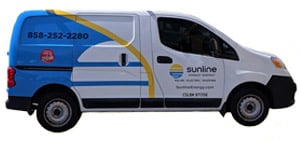If you’re planning on going solar within the year, none of the following really matters. You’ll automatically receive a great price for your photovoltaic (PV) installation.
But if you plan on delaying your solar purchase, beware. One of the industry’s most attractive incentives will expire soon. And if you install panels after that due date, you can expect to pay a premium.
We’re of course talking about the federal solar investment tax credit (solar tax credit) – an extremely generous subsidy that has revolutionized the clean energy industry.
Thanks to this incentive:
- New installations now go up every 3 minutes (which is amazing)
- Solar employment has soared from 15,000 employees (2005) to over 173,000 workers (2014)
- PV installation costs have plummeted from $7.50 per watt (2009) to less than $3 per watt (2013)
But in December of next year, the solar tax credit will drop to 10% (for businesses) and 0% (for homeowners).
With this quickly approaching deadline, prospective solar customers are scrambling to get their systems up as soon as possible. In fact, many solar installers report having backlogs since “last minute” demand for PV systems is so high.
What Happens If You Miss the Solar Tax Credit Deadline?
Some fear that when the deadline expires, the number of new solar PV installations will plummet. After all, the relative cost of going solar will be much higher (30% higher).
And it’s probably true that there will be a temporary dip.
But we predict that overall demand for new PV installations will actually rise. And here’s why:
- According to Swanson’s Law, the cost of solar PV panels decreases 20% for every doubling of “shipped” panels. This is because manufacturers continue to innovate and enjoy economies of scale as demand increases.
- Utility rates keep trending upwards – largely as a result of dwindling fossil fuel reserves and increased global demand for energy. Whatever your utility bill is today, it will almost certainly be higher a year from now.
These converging trends are helping to reshape the renewable energy industry. Grid power is becoming more expensive, and solar power is becoming less.
In some states (including California), solar is already cheaper then continued reliance on the grid. And within the next year or so, nearly the entire country will have reached or exceeded solar grid parity.
So even if you delay your PV installation, you’ll still end up saving money. But if you go solar today, you’ll save a lot more.
Ready to Get Started on Your Solar Project Before Tax Credits End?
To take advantage of this tax credit before it expires, contact us for a free consultation.

